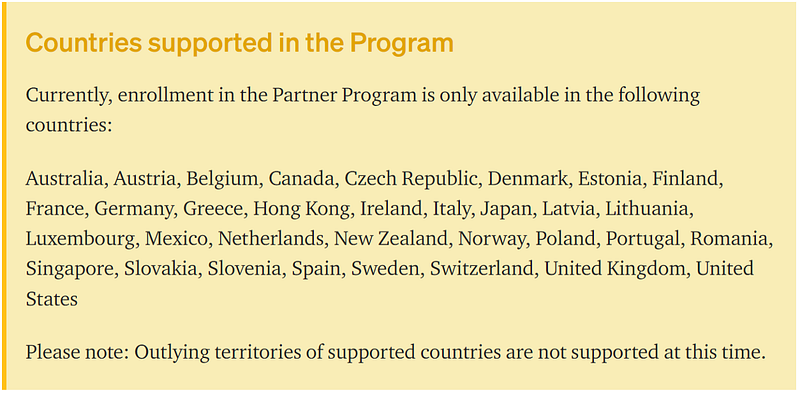Substack vs Medium: Which Platform to Start Writing On in 2022
If you’re looking to start making money by writing online, this article is just for you. In it, you’ll find everything you need to know…

If you’re looking to start making money by writing online, this article is just for you. In it, you’ll find everything you need to know about the internet’s two biggest monetized writing platforms: Medium and Substack.
Which one should you pick to start writing your blog? Read on to find more.
I have been writing on Medium since mid-2020, and have had a successful Substack newsletter since around the same time. This article is based on my experiences and the stories I heard from my writer friends who are prolific on both platforms. It contains some hand-picked pieces of advice that will help you learn all that you need to know to get your online writing journey started.
Here’s what to expect in this article:
- What is Substack
- Some pros and cons of Substack
- What is Medium
- Some pros and cons of Medium
- Medium vs Substack: Which writing platform to pick in 2022 and why?
Ready to get started? Let’s dive into a detailed comparison of Medium vs Substack, and let’s discuss everything a writer who’s looking to start writing online needs to know about these two platforms.
What is Substack?
Founded in 2017 in San Francisco, California, Substack is an American online platform that provides publishing, payment, analytics, and design infrastructure to support subscription newsletters. It allows writers to send digital newsletters directly to subscribers.
Some salient features of Substack
- Send regular emails to your readers: Substack is primarily an email service provider that lets users write blogs, send newsletters, and carry out email marketing.
- Read, save, share: There’s also some social media aspect to it, as it allows readers to like, leave comments, and share the newsletter posts on their Twitter pages.
- Find a niche and stick to it: Successful Substack users develop their community around a niche topic. This closely follows the 1000 true fans concept popularized by Kevin Kelly.
- A soon-to-be social media platform? The interface and the latest updates, including the launch of the Substack iOS app, however, imply that the platform might be well on its way to becoming a social media platform like Medium or Twitter.
More on starting and growing a newsletter here.
Substack’s monetization model
Users can set up a subscription model with their newsletter, locking a few posts each month for paying subscribers, while making the rest of the posts available for all subscribers to read. The writers have the freedom to set whatever rates they deem fit, and the readers can buy monthly or yearly subscriptions to the newsletter.
Writers can leverage this to set up a paid newsletter that lets them earn a monthly recurring revenue, thus providing some much-needed stability and peace of mind. Substack takes a 10 per cent commission for each transaction and all payments are made through Stripe.
For writers, your connection to your readers gets upgraded when they choose to install the app. As ever, you retain total ownership of your content and mailing list, but now you also get instant, reliable delivery (no more Promotions folder!), multiple media formats in a single package, and another way for readers to connect with you and your work. — Chris Best, Hamish McKenzie, Jairaj Sethi, Introducing the Substack app: What you read matters
Pros of Substack
- Direct connection with readers: Your emails land directly into the reader’s inbox, providing the grounds for a more personal connection with them. This is a feature for which Substack is widely loved and respected among the writing community.
- Send free emails for life: Other email service providers like MailChimp, MailerLite, or ConvertKit charge you money to send emails, especially if you have more than 1000–2000 subscribers. But Substack lets you send free emails for life, irrespective of your subscriber count.
- Discoverability on the platform: Since Substack makes money when the writers earn from subscriptions, the platform interface is designed in such a way to increase email subscriptions for your email newsletter.
- Full control over content: As a writer, you are the owner of your newsletter, and can publish any content that you’d like. This opens up the possibility to do brand sponsorships (more about them here) on your newsletter wherein you introduce your readers to a new tool they would benefit from. A great place to find relevant sponsors is Swapstack — the premier newsletter advertising marketplace.
Cons of Substack
- Lack of the community aspect: The comments section on Substack is usually pretty quiet, with even popular newsletter posts getting a handful of comments.
- Exclusivity in making money: Stripe is the only payment gateway available, which automatically excludes writers from many countries.
- Difficulty in ranking on Google: On Medium, a blog URL looks like “medium.com/article-title” while on Substack, the blog URL looks like “yourname.substack.com/article-title.” This type of URL has some difficulty getting ranked on search engines.
- Lack of advanced analytics: Substack only shows writers the number of times their newsletter has been opened and what percentage of readers clicked on the links. There is no information about audience demographics, what other topics the readers are interested in, how much time they spent reading the post, etc.
What is Medium?
Founded in 2012, by Ev Williams, the founder of Blogger and Twitter, Medium is a publishing platform where people can read important, insightful stories on the topics that matter most to them and share ideas with the world. As a writer on Medium, you can share your stories with the world with their easy-to-use editor.
Publishing on Medium is free and the stories you publish may be distributed to your followers, as well as millions of readers who follow relevant topics.
Some salient features of Medium
- Online blogging platform: Medium is an online writing and blogging platform that lets users write their stories, publish them either on their profile or in publications, and send the stories as emails to readers who choose to subscribe to email updates.
- Social media for writers: There’s a full-fledged social media aspect to Medium, with a homepage with popular stories across the platform and those recommended by the algorithm. Readers can leave up to 50 claps on a story, add it to their “list” which allows them to refer to it later, and leave comments on the articles.
- Write about whatever topic you want: Successful Medium users write about a broad umbrella of topics across various publications and build an audience by showing how diverse their talent is.
Medium’s monetization model
Medium has a program called the Medium Partner Program where writers can get paid based on how many minutes their articles are read by paying readers who pay $5 a month to read on Medium.
Medium also has a referral bonus where every paying reader who joins Medium through their referral link. This revenue-sharing model allows readers to directly support the writers they love.
All payments are made through Stripe. Currently, the Medium Partner Program and referral program are only open in 33 countries.

Pros of Medium
- Better distribution options: Medium offers opportunities for writers to be featured in publications, as well as boost their credibility with tags such as “Top writer,” “Featured writer,” etc.
- Great domain authority: Medium has a great domain authority of 72 which makes it easy for your article to get ranked for high-competition keywords. This means writers have an amazing opportunity to receive more traffic on their blogs.
- Increased readership with publications: The publications on Medium offer an extra chance for writers to reach an even wider audience, as the more active publications have upwards of 700,000+ readers.
- A robust community of readers and writers: The comments section on Medium is quite robust and interesting, with popular articles getting hundreds of comments, and commenters leaving deep, heartfelt stories responses to an article.
Cons of Medium
- Exclusivity in making money: Since the Medium Partner Program is only open to 33 countries, a large section of writers from Asia, Africa, and South America constantly express dissatisfaction over being excluded from being able to monetize their writing on Medium.
- Success on Medium is algorithm-dependent. As the earnings are based on how much time readers spend engaging with their content, writers aren’t in control of how much money they would make. As a result, earnings can fluctuate wildly every month, and there’s no way of saying which stories will turn out to be viral hits and which ones will only make a few cents.
- Limits on ads, affiliates, and sponsorships: The official Medium policies clearly state that “Third-party advertising and sponsorships are not allowed. While you may promote your own business, you may not advertise or promote third-party products, services, or brands through Medium posts, publications, or letters.” This limits your earnings from a story to the Medium Partner Program and limits the types and extent of brand sponsorships you can do with your content on Medium.
Substack vs Medium: Which Platform to Start Writing in 2022?
There isn’t a single correct answer to this question. The ultimate decision should be based on what are your goals as a writer and how do you plan to monetize your content.
If you pick Medium, you’ll get paid based on the total amount of time someone spends reading your articles. Even though you live in a country where the Medium Partner Program is not yet available, publishing on Medium is a great way to get exposure to a global audience and build a strong portfolio.
Substack lets you send emails for free and set up a subscription-based model, and you’re in control of what you charge from your readers, thus giving you a very good idea of how much you’ll make at the end of each month.
Even though you can send your stories as emails to your readers using either of the two platforms, Substack is the better option as it is a platform specifically designed for sending email newsletters.
And even though you can publish articles on both platforms, Medium is the better option as it has a much higher domain authority than Substack, increasing the online visibility of your content. There are also more platform-specific tools like publications and internal distribution (aka curation) tools that can help you drive even more traffic to your blog.
Do you have experience publishing in either Substack or Medium? What has your experience been on the platforms? Do share your story in the comments.
Want to monetize your newsletter but don’t want to ask your readers for money? Head over to Swapstack and start finding incredible sponsorships for your email newsletter.
